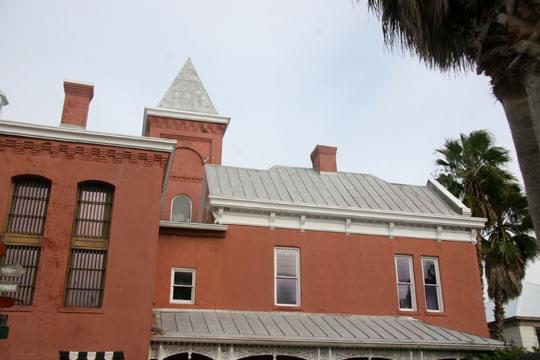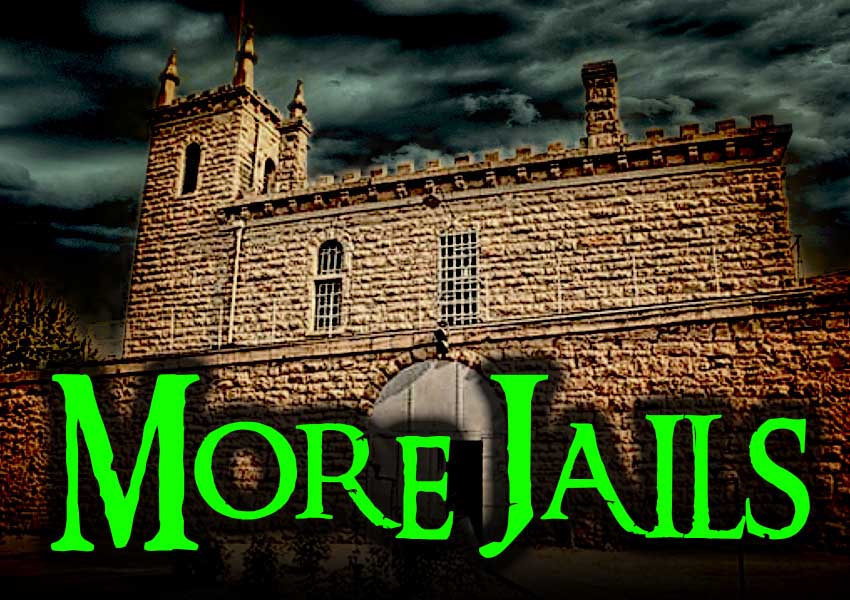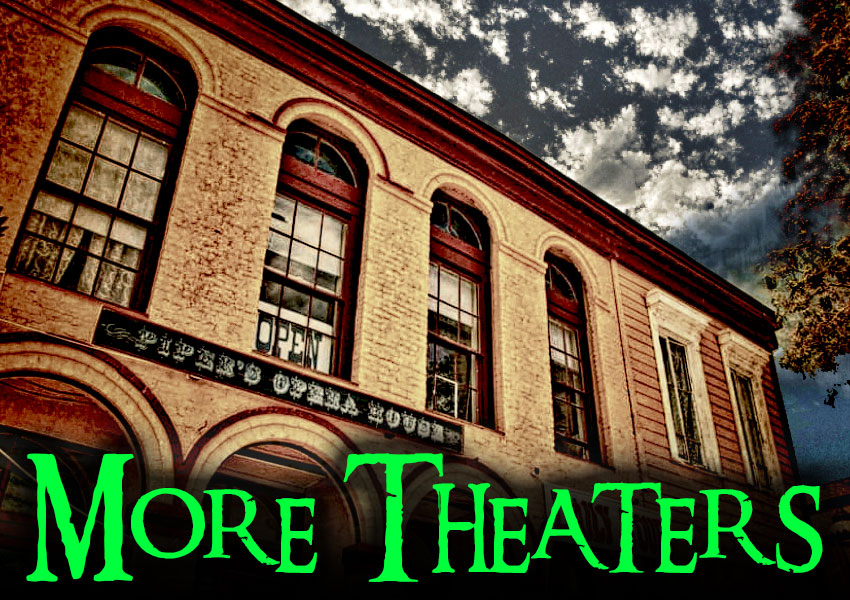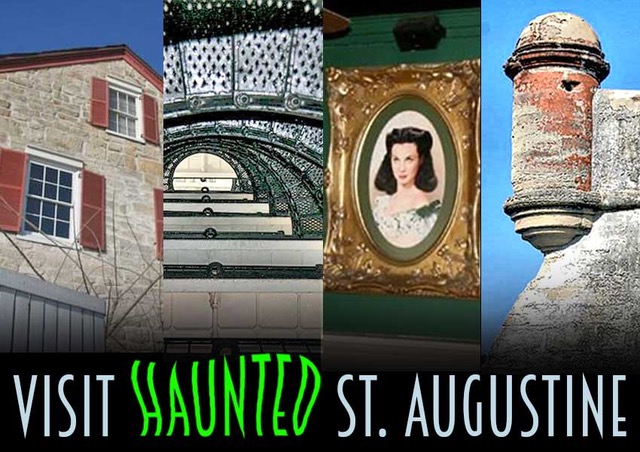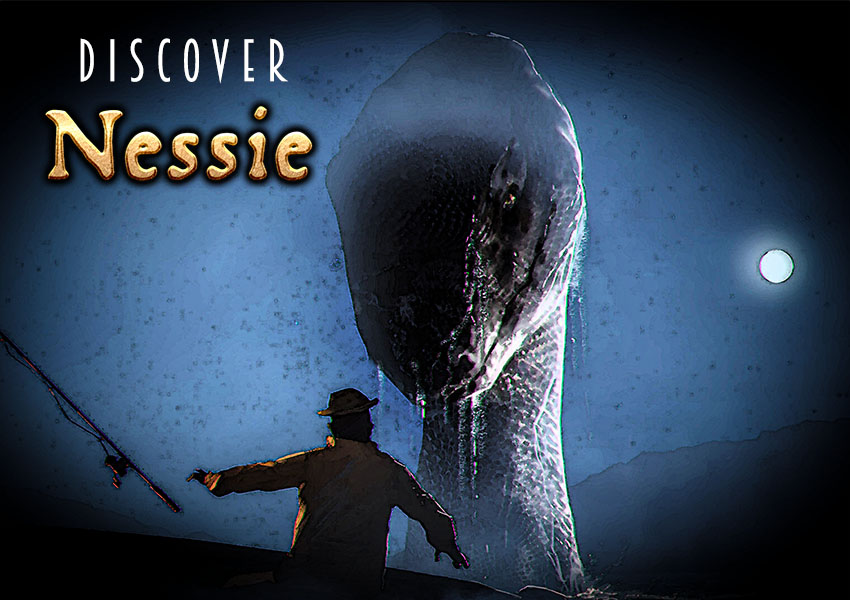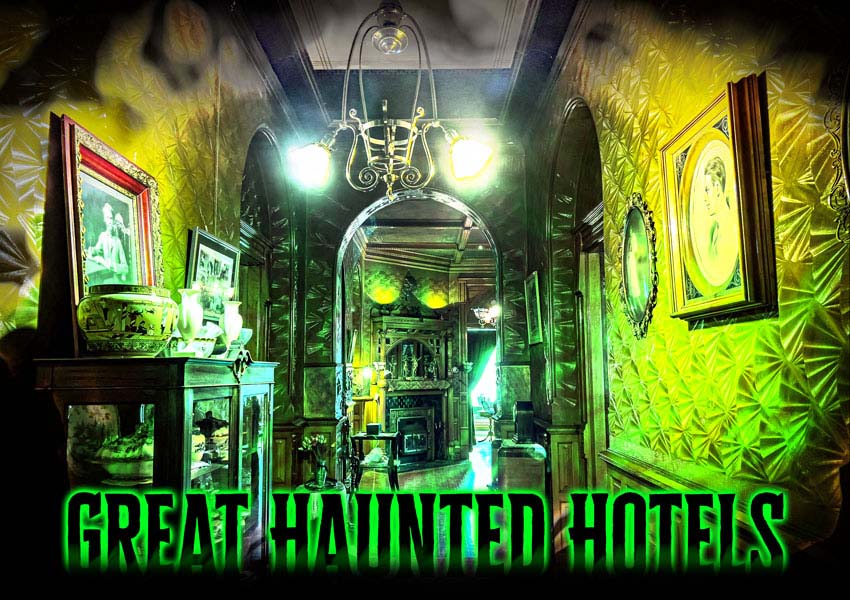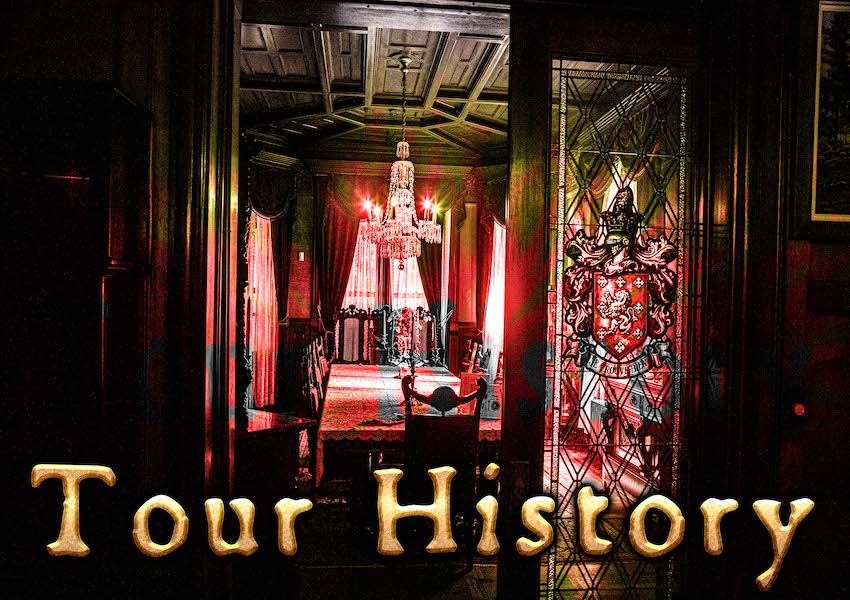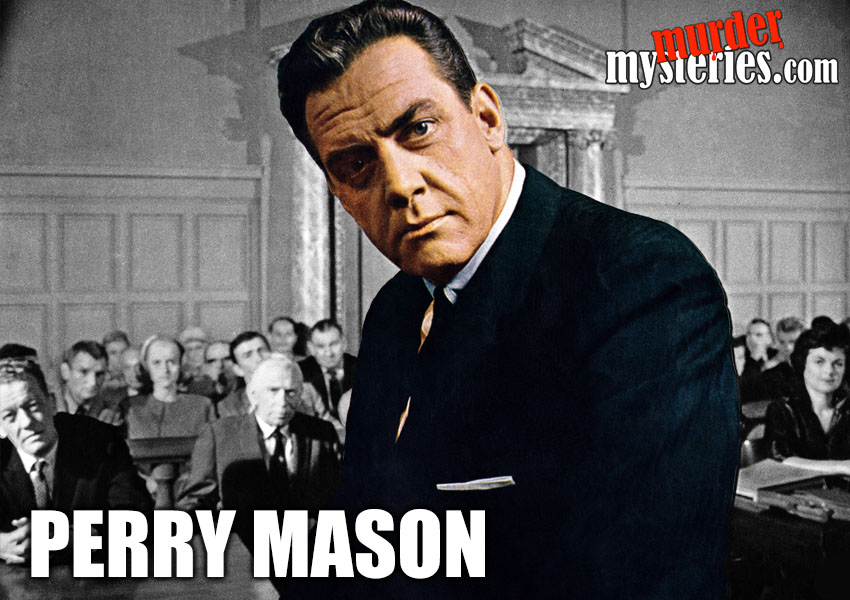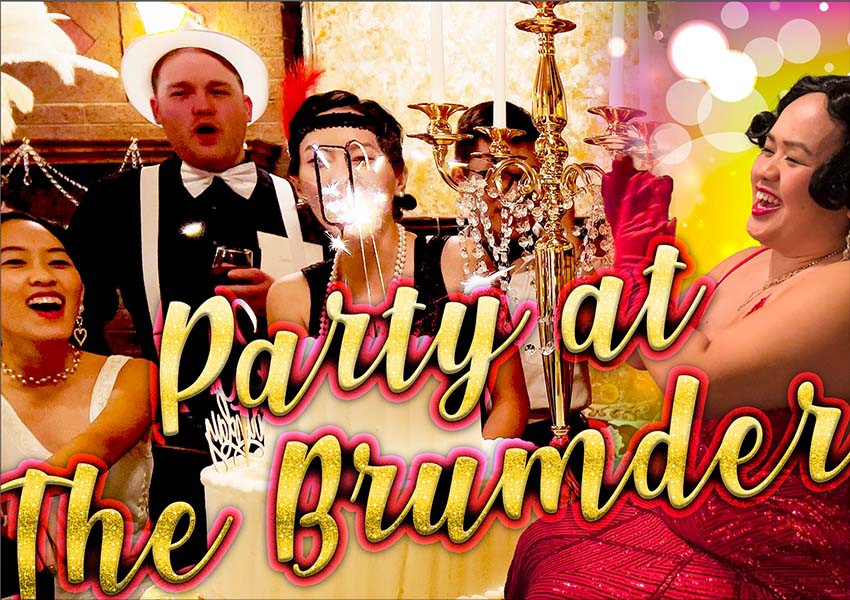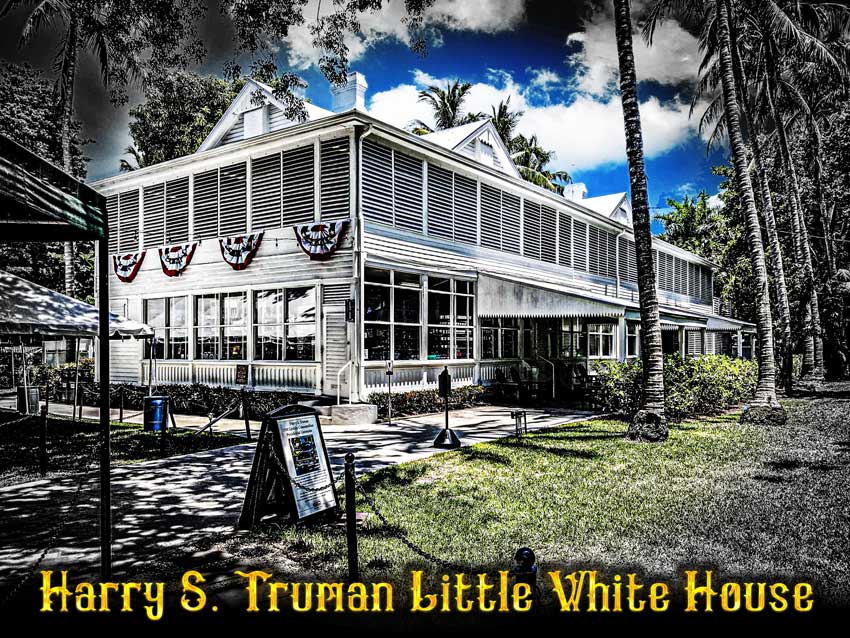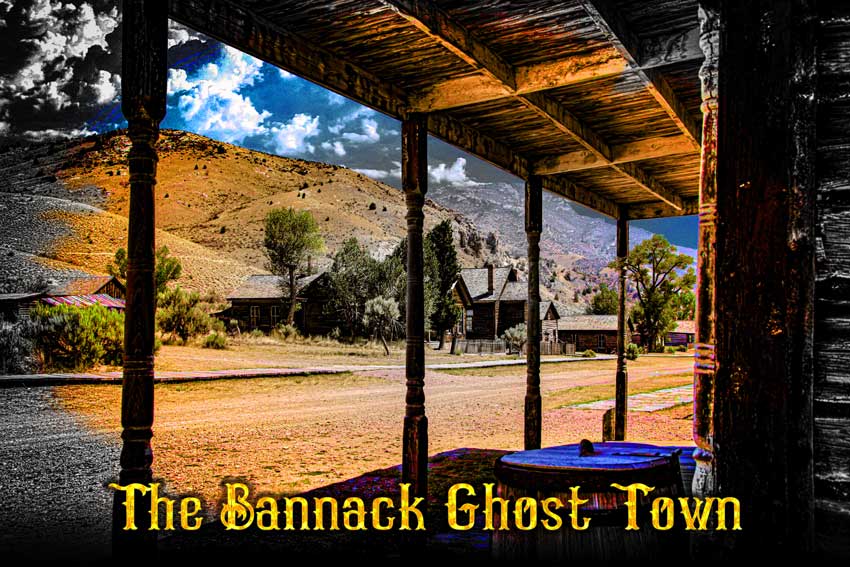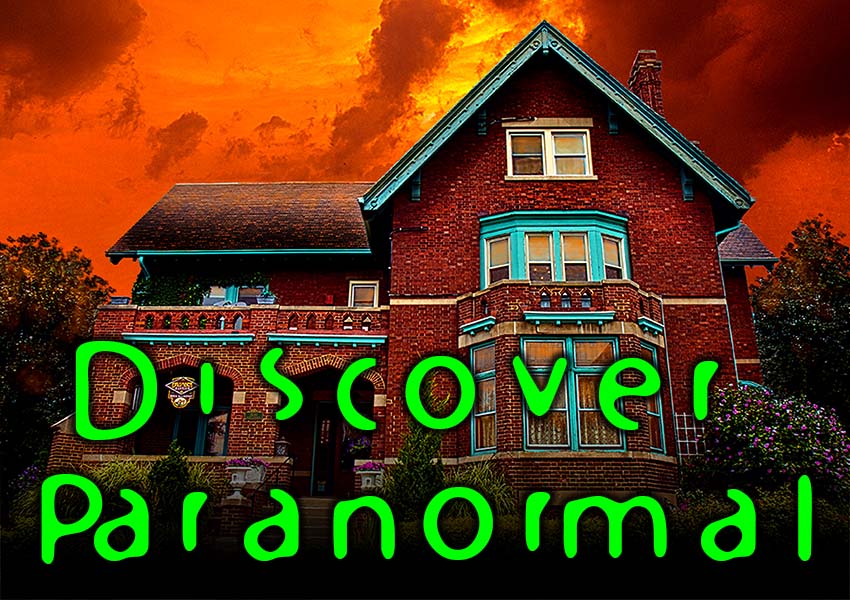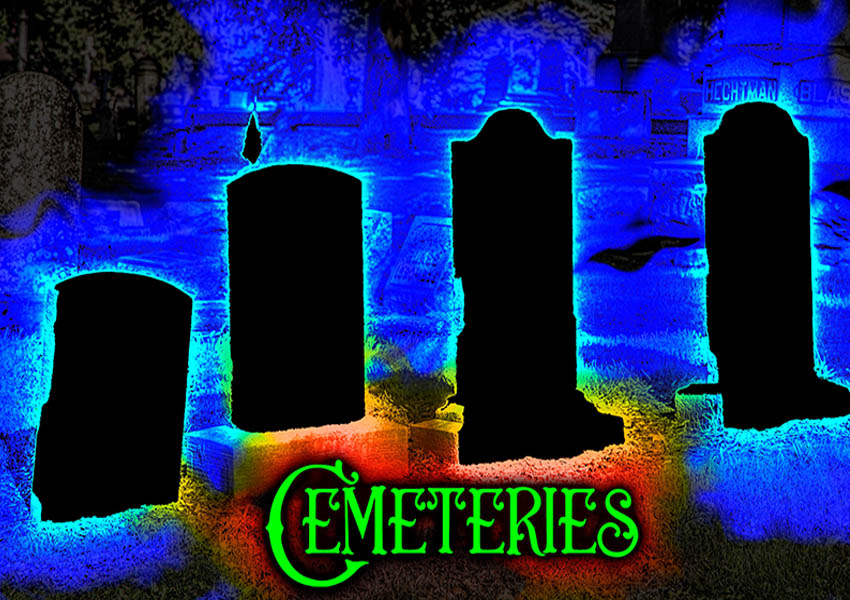Saint Augustine Florida
Saint Augustine Jail
The spirit activity here offers the full paranormal sports package of experiences.
The Old Jail Museum have been able to put their spirits on the payroll.
DESCRIPTION AND HISTORY
The St. John County Jail in Saint Augustine that stood in 1890, was a real eye-sore, truly a fixer-upper opportunity. Unfortunately, it was located in full view of Henry Flager’s beautiful, upper-class vacation mecca, Ponce De Leon Hotel. His rich clientele had to see this seedy claptrap of a building from their favorite luxurious holiday spot.
Henry Flagler, co-founder of Standard Oil and other businesses, was always a mover and a shaker, never one to not try to solve problems. He donated $10,000 to the St. John County Commissioners to build a new jail out of sight of the Ponce De Leon Hotel.
The commissioners added $7,000+ to the building fund, and picked a nice, $2,500 property several blocks north of the city gates. With such a rich building fund, they were able to hire a professional outfit, The Pauly Company, which specialized in building prisons. They later built such places of detention as Alcatraz Prison.
During the late 1800s, it was popular to have the sheriff warden and his family live in the same structure as the jail, which created the jailhouse concept. (The Crown Point Sheriff’s House and Jail Building * Allegan County Sheriff’s House & Old Jail Museum * Squirrel Cage Jail). So, it isn’t surprising that the new facility would be a jailhouse, for both the prisoners and the jail’s sheriff warden, and his family.
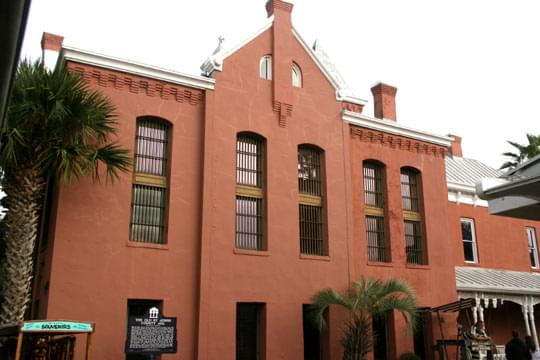
The new and improved St. John County Jailhouse was a beautiful two and three story structure with a tower, built in the Queen Anne style, enhanced by Victorian brick designs in both the north and the south wings. Though the building was pleasing to the eye outside, the inside was a foreboding environment. While the warden’s quarters were comfortable, the prisoner units were well-fortified, grim and austere places of incarceration for “guests of the county.”
The 20 foot, thick-walled cells, which had no window glass in the windows, could hold up to 72 prisoners. Men were jailed on the second and third floors. In the center of each floor, there were eight regular cells per floor, with room for four men in each. The hallway ran around the cells.
The damp, open barred-windowed cells for women were located on the first floor, just inside the back door. Not many women were jailed here, as most were sentenced to house arrest or put in a sanitarium. The few that stayed here were probably pretty notorious, tough cookies, able to endure not only the rain, but the little beasties that crawled in as well.
Maximum security cells for the real bad boys were located in back of the jail. They included the usual things needed to keep the worst of the worst in line, such as stockades, a torture cage, and a clear view of the hanging area. The gallows were custom-built for each execution, under the huge oak tree. The condemned, “dead man walking” inmates could see the scaffold for their execution being built, the day before their planned death.
Prisoners convicted of murder were executed here. Sometimes they took up to 14 minutes to die. Unfortunately, prison authorities didn’t quite understand the science behind snapping a man’s neck. The physics of the rope-length, the length of the planned fall, and the man’s body weight had to be carefully calculated for a humane execution. If not done right, the person being hanged could either be decapitated, or suffer from a dangling strangulation.
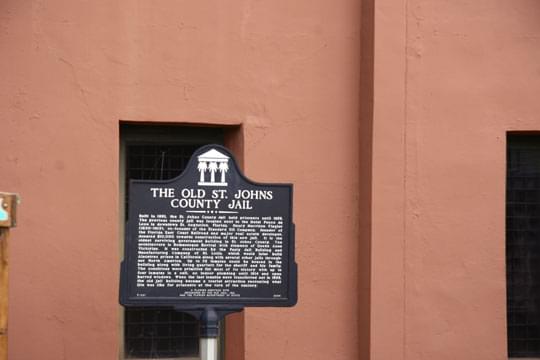
One may think that jailers didn’t care if the men suffered a tortuous death. For the philosophy of the jail was that the prisoners were there to be punished, not rehabilitated. However, in Dave Lapham’s book, Ancient City Hauntings: More Ghosts of St. Augustine, he reports that at a certain point after an important medical experiment was conducted during the hanging of a cooperative condemned man, executions stopped at this jail.
With or without executions, jail conditions were terrible for inmates. Food served consisted of grits in the morning, tac if they were sent out to work, and beans for dinner. Beds were made of Spanish moss, the perfect breeding ground for bed bugs, blood-sucking parasites. Blankets were an optional luxury.
There was no protection from the whims of the guards, or the sheriff warden, and solitary confinement and other overly harsh punishments were dished out for minor offenses. Studies consistently show that people with absolute control over others have a tendency to abuse them. The solitary confinement area had no windows and no bed.
There was also no heat, no running water, and no sanitation for the disposal of human waste, as a form of punishment. Only a bucket was provided for every four prisoners. Sick prisoners were kept among the general population. At this time, the prison authorities in Florida didn’t understand the necessity of proper sanitation, but they should’ve known better than to put the sick in with healthy inmates.
What probably kept the prisoners from going insane, was the required work program. Prisoners were put on work details in the community, bringing money into the county’s coffers. The conditions were hard, and the hours were long, but it did get prisoners out of a stark environment, and gave them the opportunity to catch little animals to supplement their bleak diet. If they could escape, they knew that the populace would help them, as this program was not popular with the people, who saw the abuse.
As the jail was open until 1953, it was eventually brought up to Florida State code over the years. Sanitary plumbing, and metallicized cells were added.
HISTORY OF MANIFESTATIONS
Places of incarceration (insane asylums, prisons) inevitably soak negative residual energy into its walls. The misery, stress and pain of confinement that comes with being cooped up/confined in an institution always leads to strong paranormal activity.
Prisons have long been dangerous places to be, for convicted people, from the earliest times to the present.
It is not surprising that prisoners died here, even if they weren’t sentenced to death.
Disease caused by poor sanitation, Dysentery, and communicable infections all took their toll. As it was/is in many prisons, inmates also died from abuse and accidents, and from the hands of other more violent prisoners.
On the gallows, men convicted of murder were hanged in needlessly painful ways.
These kinds of incidents and imprisonment in general have been known to cause hauntings in other former jails/prisons:
Sometimes prisoners who die in “the joint”, are afraid to pass over, because of what they did while alive.
In at least once case, a sheriff warden’s daughter may hav been the victim of disease or accident. The spirits of people who die before their time sometimes choose to stay in this world.
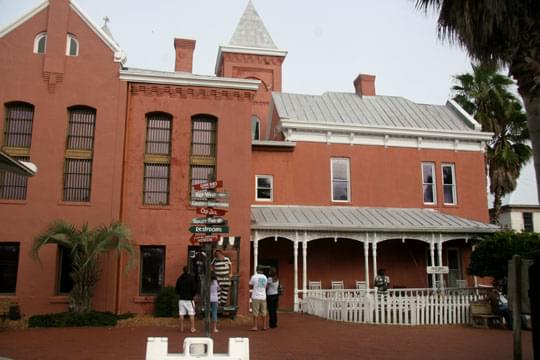
MANIFESTATIONS
The paranormal activity found in this building offers the full package of sensations experienced by human beings in haunted places.
At random times, two awful odors can waft through the building: the smell of sewage, causing stomach upset in some, and a sickeningly sweet smell that makes the living uncomfortable have been reported.
To find out about other incidents of paranormal activity, and the full story on the incidents described above, check out: Ghostly Tales From America’s Jails, by Joan Upton Hall, and Dave Lapham’s book, Ancient City Hauntings: More Ghosts of St. Augustine.
Intelligent hauntings by entities — Apparitions/shadows appear to the living, on occasion.
The apparition of a man was seen sitting on a chair.
A cowering apparition was once spotted in a cell by a tour guide, but disappeared through a wall.
Unseen presences are not only felt by the living, but they also tug at, blow on and talk /whistle to those folks who come inside the building.
A male presence was sensed by a psychic, pacing the hallway by the kitchen.
In one of the women’s cells, a very grumpy unseen presence has been known to push and trip people.
During a tour, a tour guide first felt a punch in his side, and then a cold hand move down his back, but being the professional that he is, this terrified fellow managed to finish his duties.
A psychic medium found an entity that had been seen around the building. She found out that this entity was executed by hanging for a crime he didn’t commit, and was afraid to go to the light because of all his misdeeds.
Voices of unseen presences have been heard directly by the living.
Wails, yells and moans have been heard by people.
An EVP of a nasty laugh was heard by a man opening the safe in the office there.
The sound of a little girl’s voice has been heard in one of the children’s bedrooms used by the sheriff warden’s family.
Other sounds related to the prison life:
Shuffling, footsteps and the jangling of chains are heard around and on the steps of the Jail.
Neighbors have heard disembodied barks of dogs coming from the back of the jail, where the prison dogs were once kept.
STILL HAUNTED?
Yes Indeed!
The Old Jail Museum is a certified haunted building, and is listed in the “National Directory of Haunted Places”.
There are plenty of personal experiences reported by staff, tourists and management that happen in the same places in the building. Paranormal investigation groups have gathered hard evidence that support these reported experiences.
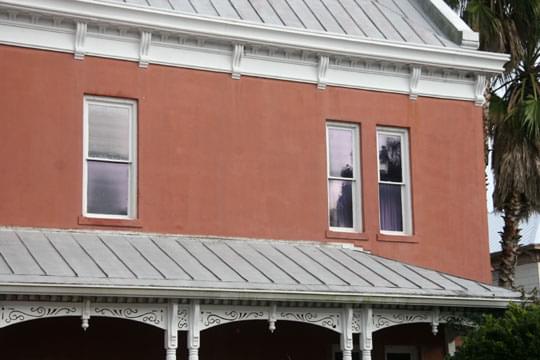 Some of the paranormal groups who have investigated:
Some of the paranormal groups who have investigated:
The Atlantic Paranormal Society (TAPS) held two investigations here.
Northern Florida Paranormal Group and an NBC News affiliate went on an investigation of the jail, and gathered some interesting evidence, and had experiences as well.
The GHOST of Pinellas Investigation Group caught some photographic evidence, showing a face, an apparition, orbs, and all heard the EVP of a little girl in the room that was occupied traditionally by the sheriff warden’s children.
The Old Jail Museum has been able to put their ghosts on the payroll, by allowing the Paranormal Seekers, an investigation group that leads ghost hunts in the building, in their Ghost and Graveyard tours: “A Night At the Old Jail”. Many are not disappointed.
LOCATION
167 San Marco Avenue
St. Augustine, Florida 32084
(904) 829-3800
The Old Jail Museum, formerly the original Saint John County Jail (1891-1953), can be found near the corner of San Marco Avenue (A1A) and Missouri Avenue, between Dufferin Street and Mantanzas Avenue, not far from the Florida Heritage Museum. Missouri Avenue connects North Ponce De Leon Boulevard to San Marco Avenue.
SOURCES INCLUDE
- Saint Augustine Jail page on Haunted Places To Go.com
- ghostsandgravestones.com
- Ghostly Tales From America’s Jails
by Joan Upton Hall - Ancient City Hauntings: More Ghosts of St. Augustine
by Dave Lapham
Our Haunted Paranormal Stories are Written by Julie Carr
Our Photos are copyrighted by Tom Carr
Your Paranormal Road Trip
